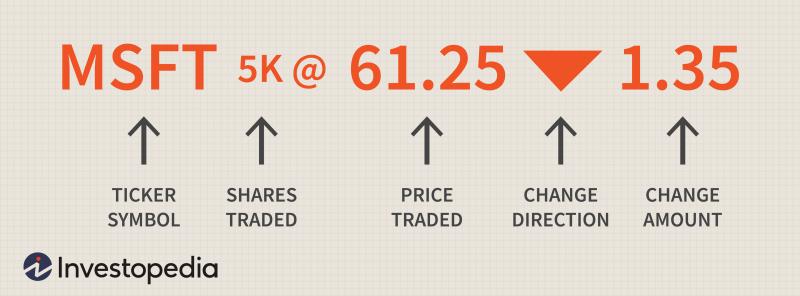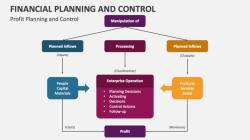What are the stock ticker symbols for?
Stock ticker symbols, often simply referred to as ticker symbols, are short, unique combinations of letters that represent a particular publicly traded company's stock on a stock exchange. These symbols serve several important purposes related to market identification and communication:
Uniquely Identifying Stocks:
- Ticker symbols provide a concise and standardized way to uniquely identify each publicly traded company's stock. This is crucial for avoiding confusion and ensuring accurate transactions in the stock market.
Simplifying Communication:
- Ticker symbols simplify the communication of stock information. In financial news, reports, and discussions, using ticker symbols allows for brevity and clarity when referring to specific stocks.
Facilitating Stock Trading:
- Ticker symbols are used in stock trading platforms and brokerage systems to facilitate the buying and selling of stocks. Traders can enter ticker symbols to quickly access information and execute trades for specific companies.
Real-Time Stock Quotes:
- Ticker symbols are integral to the display of real-time stock quotes on financial news websites, television broadcasts, and stock market tracking applications. Investors and traders can easily monitor the performance of stocks by looking at their respective ticker symbols.
Market Data Feeds:
- Ticker symbols are used in market data feeds that provide information about stock prices, trading volumes, bid-ask spreads, and other relevant data. These data feeds are essential for financial professionals, analysts, and algorithmic trading systems.
Stock Exchanges:
- Ticker symbols are associated with specific stock exchanges. For example, stocks listed on the New York Stock Exchange (NYSE) have ticker symbols that end with ".NY" or ".NYSE," while stocks on the Nasdaq have ticker symbols that end with ".NSD" or ".NASDAQ."
Identifying Security in Financial Statements:
- In financial statements and reports, ticker symbols are often used to identify the securities (stocks) issued by a company. This helps investors and analysts track the performance of specific stocks within a company's financial statements.
Historical Data Analysis:
- Ticker symbols are crucial for historical data analysis. When analyzing past stock performance, researchers use ticker symbols to retrieve accurate and specific historical stock price and trading volume data.
For example:
- Apple Inc.'s ticker symbol is AAPL.
- Microsoft Corporation's ticker symbol is MSFT.
- Google's parent company, Alphabet Inc., has two classes of shares: GOOGL (Class A) and GOOG (Class C).
In summary, stock ticker symbols play a vital role in the efficient functioning of financial markets by providing a standardized and concise way to identify and communicate information about publicly traded stocks.
Decoding Stock Ticker Symbols and Their Significance
Stock ticker symbols are unique identifiers assigned to companies and securities traded on stock exchanges. These symbols are typically short and easy to remember, allowing investors to quickly identify and track stocks in their portfolios. Ticker symbols play a crucial role in the efficient functioning of stock markets and provide valuable information to investors.
Significance of Stock Ticker Symbols:
Identification: Ticker symbols serve as unique identifiers for companies and securities, enabling investors to easily distinguish between them.
Tracking and Monitoring: Ticker symbols facilitate the tracking and monitoring of stock prices and trading activity.
Communication and Research: Ticker symbols are widely used in financial news, research reports, and investment discussions.
Order Placement and Execution: Ticker symbols are essential for placing buy and sell orders with brokers.
Identifying Companies and Securities Represented by Ticker Symbols
To identify the companies and securities represented by ticker symbols, investors can utilize various resources:
Stock Exchanges: Major stock exchanges, such as the New York Stock Exchange (NYSE) and Nasdaq, maintain comprehensive lists of ticker symbols and their corresponding companies.
Financial Websites: Financial websites like Yahoo Finance and Bloomberg provide searchable databases of ticker symbols and company information.
Investment Apps and Platforms: Online investment platforms and mobile apps typically display ticker symbols alongside company names and other relevant information.
Understanding the Structure and Format of Stock Ticker Symbols
Stock ticker symbols generally follow a standardized format, consisting of one to five letters. The specific format may vary depending on the stock exchange or the type of security.
Common Ticker Symbol Formats:
Company Name Initials: Some ticker symbols are simply the initials of the company's name, such as AAPL for Apple Inc.
Industry Abbreviations: Some symbols reflect the industry in which the company operates, such as JPM for JPMorgan Chase (financial sector).
Mnemonic Symbols: Some symbols are mnemonic devices that help investors remember the company's name, such as AMZN for Amazon.com.
Unique Identifiers: Some symbols are unique identifiers assigned by the stock exchange, such as X for United States Steel Corporation (NYSE).
Securities with Unique Ticker Symbol Formats:
Exchange-Traded Funds (ETFs): ETFs often use symbols that end with an identifier indicating the ETF type, such as SPY for the SPDR S&P 500 ETF Trust (SPY).
Stocks with Multiple Classes: Companies with multiple classes of stock may have different ticker symbols for each class, such as BRK.A for Berkshire Hathaway Inc. Class A shares and BRK.B for Class B shares.
American Depositary Receipts (ADRs): ADRs representing foreign stocks may have ticker symbols that include the country code, such as BABA for Alibaba Group Holding Limited (NYSE, ADR).
In conclusion, stock ticker symbols are essential tools for navigating the world of stock markets. By understanding their significance, learning to identify companies and securities represented by symbols, and comprehending their structure and format, investors can effectively track stocks, conduct research, and make informed investment decisions.











